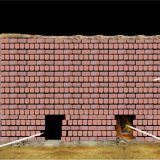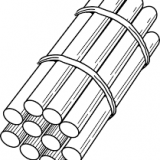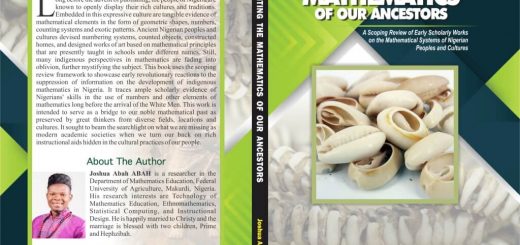“Mudu” as a Market Measure
![]()
Our ancestors devised various means of commercial exchange along with diverse units for measuring farm produce that change hands within such exchange. These prehistoric units are all sizable approximations of quantity depending on the item involved in the trade. These units of measurement range from baskets of varying shapes and sizes to basins and gourds of diverse sizes made from the calabash tree (Crescentia aijete). Some of these measures are still being used in present-day market. A notable descendant of this generation of units is the small-sized calabash plate still in use at localdrinking joints for measuring kunu and burukutu. The modern approximation of this particular calabash is the Mudu.
(Crescentia aijete). Some of these measures are still being used in present-day market. A notable descendant of this generation of units is the small-sized calabash plate still in use at localdrinking joints for measuring kunu and burukutu. The modern approximation of this particular calabash is the Mudu.

Mudu
The mudu [pronounced: moo-doo] is the common unit of measure in which food stuff is sold in markets across Nigeria. It originated in northern Nigerian grain markets as unit of mass for rice and had become an acceptable form of measure in other grain markets across the country[1]. When filled with liquid to the rim and levelled, the mudu approximately equals 1.13 kilograms[2]. When filled with grains to a conical top, the mudu approximates 1.5 kilograms. Another common name for mudu is “congo”.
The popularity of the mudu can be attributed to the affordability in terms of the cost price of the unit measure. Homes which may not have the capacity to buy grains in tins and bags often opt for a few mudus. Alternative measures in this regard include milk cup and paint/custard container.

Cup, Mudu, Paint Rubber
The milk cup appears to be the smallest measure for grains. The standard Nigerian mudu contains 8 cups. The paint/custard container, popularly called “Paint Rubber” is a four-litre cylindrical container, originally containing paint (or custard). After using up this original content, the container is thoroughly washed, dried and safely converted to a unit of measuring grain. The standard paint rubber contains 3 mudus. Mathematically, this implies that one paint rubber contains 3 times 8 equals 24 cups. Bigger units of grain measurement include basin, tin, and bag.
The variations in the quantities carried by these traditional units of measurement can be built into the teaching and learning of several related topics in the Basic Mathematics curriculum. For instance, the number of items a unit measure can carry can be used in teaching and demonstrating fractions, thereby transforming the abstraction for fraction into factual and observable realities.
References
- A Fund to Reward Innovation. https://sites.google.com/a/propcom.org/www/afundtorewardinnovationinnigeria
- https://sizes.com/units/mudu.htm
Views: 35036















